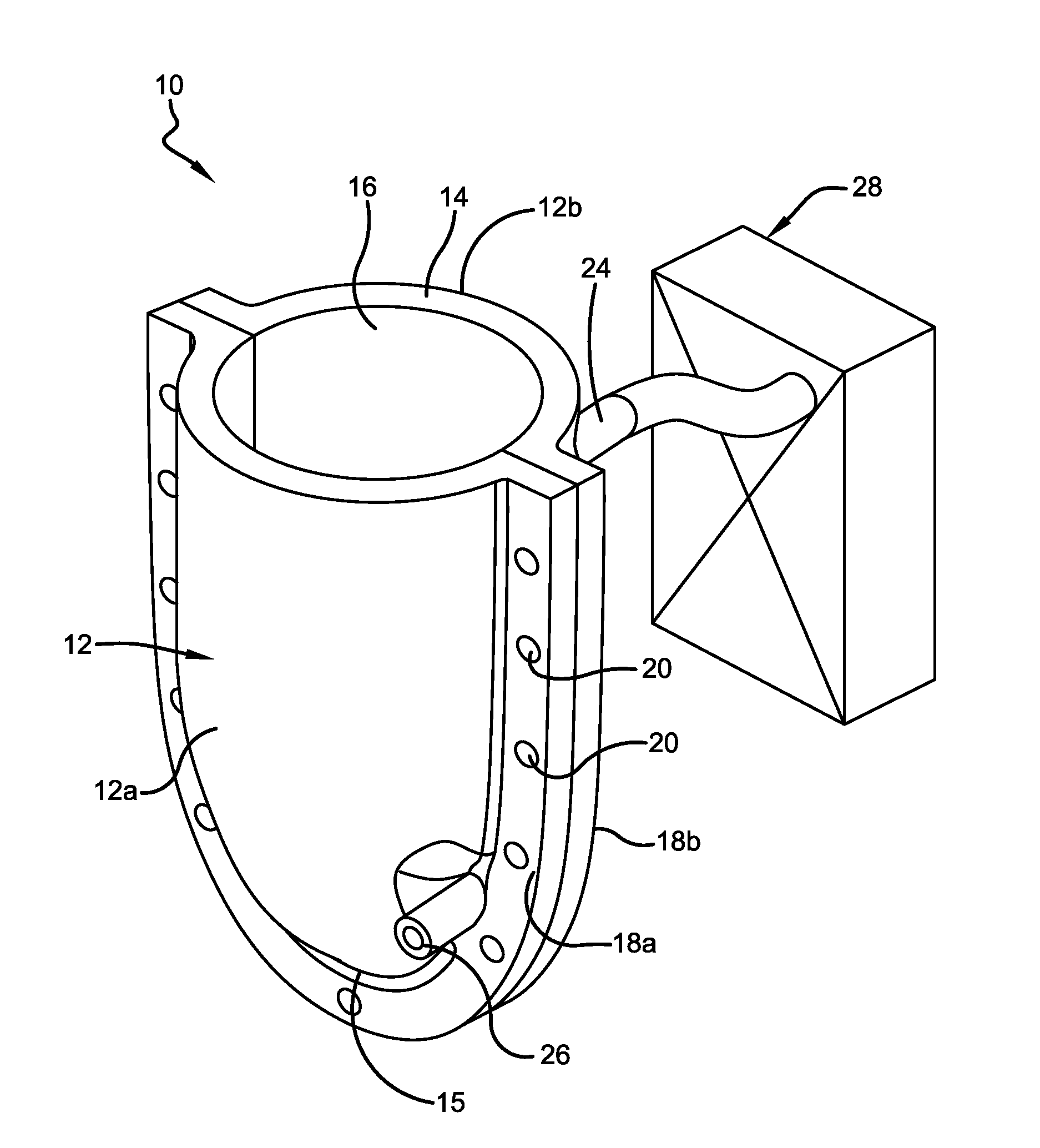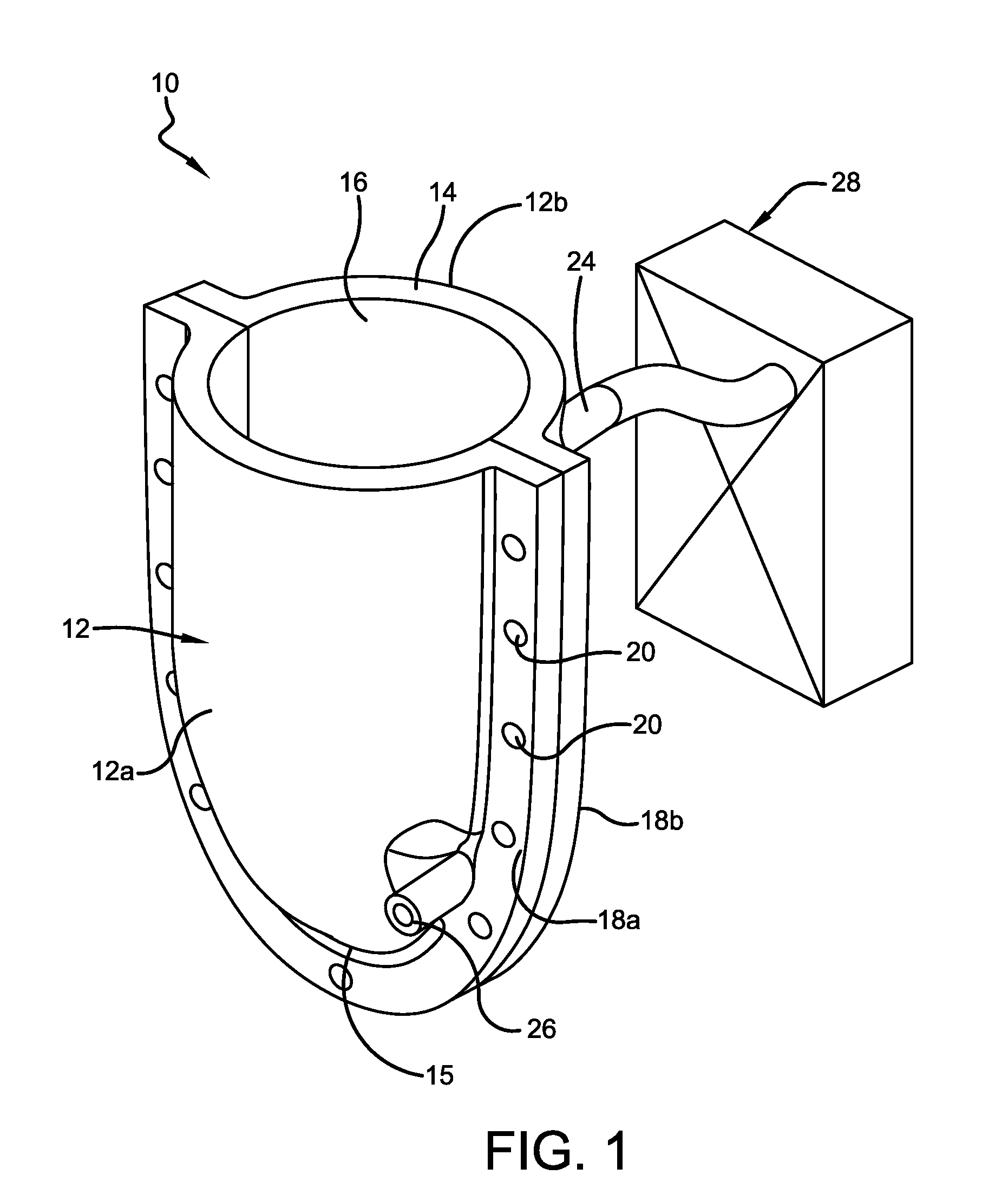Prosthetic socket with integrated cooling channels
a technology of prosthetic sockets and cooling channels, applied in the field of prosthetic sockets with integrated cooling channels, can solve the problems of reducing the quality of life of amputee patients, affecting the rehabilitation of amputee patients, and complex prosthetic environmen
- Summary
- Abstract
- Description
- Claims
- Application Information
AI Technical Summary
Benefits of technology
Problems solved by technology
Method used
Image
Examples
Embodiment Construction
[0022]With reference to FIGS. 1-2, a residual limb prosthesis in accordance with this invention is shown and designated by the numeral 10. The residual limb prosthesis 10 includes a socket 12 for receiving a residual limb, wherein the socket 12 includes a socket wall 14 defining a limb-receiving surface 16. In some embodiments, the limb-receiving surface 16 is the inner surface of the socket wall 14, in order to come in direct contact with the limb in the socket 12. A liner, not shown but generally known in the art, might also be employed.
[0023]The residual limb prosthesis of the present invention further includes a coil-shaped channel 22 formed directly within the socket wall 14. The coil-shaped channel 22 extends throughout the socket wall 14 from an inlet 24 to an outlet 26, wherein the outlet 26 of the present invention fluidly communicates with the ambient atmosphere. The coil-shaped channel 22 is a continuous channel of any desired cross-sectional shape (though a circular shap...
PUM
 Login to View More
Login to View More Abstract
Description
Claims
Application Information
 Login to View More
Login to View More - R&D
- Intellectual Property
- Life Sciences
- Materials
- Tech Scout
- Unparalleled Data Quality
- Higher Quality Content
- 60% Fewer Hallucinations
Browse by: Latest US Patents, China's latest patents, Technical Efficacy Thesaurus, Application Domain, Technology Topic, Popular Technical Reports.
© 2025 PatSnap. All rights reserved.Legal|Privacy policy|Modern Slavery Act Transparency Statement|Sitemap|About US| Contact US: help@patsnap.com



